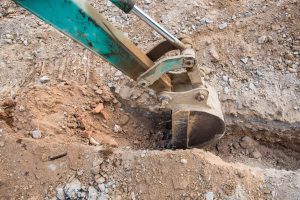Public art installations play a vital role in enhancing urban landscapes, fostering community engagement, and celebrating cultural diversity. However, the installation of these artworks often requires precise and careful excavation that poses minimal risk to the surrounding environment and underground utilities. Non-destructive digging (NDD) techniques, championed by Perth’s leading vacuum excavation specialists, offer an ideal solution. These methods ensure safety and efficiency while installing artistic works in public spaces without compromising the integrity of existing infrastructure. In this article, we will explore how non-destructive digging supports public art installations, detailing the process and its benefits. From enhancing cultural landscapes to ensuring public safety, learn why NDD is the preferred choice for facilitating art installations across Perth and beyond.
The Role of Non-Destructive Digging in Public Art Installations
Non-Destructive Digging (NDD), often referred to as vacuum excavation, is a sophisticated technique that utilises high-pressure air or water to break up and remove soil without harming the surrounding area or underground utilities. This accuracy and safety make NDD an indispensable technology for the installation of public art, where precision is paramount and disturbance to the public space must be minimized.
In public art projects, the exact location often involves crowded urban settings with complex underground networks of utilities like gas lines, water pipes, and communication cables. Traditional excavation methods could easily damage these structures, causing not only costly delays but also potential hazards. NDD mitigates these risks, ensuring that the installation of sculptures, monuments, or other artistic structures can proceed smoothly and safely.
Benefits of NDD in Urban Spaces
1. Minimal Environmental Impact
NDD’s precision reduces the area of excavation required for installing art pieces. This is crucial in urban environments where space is limited, and the surrounding landscape needs preservation. By using NDD, the impact on the environment is significantly lessened, protecting vegetation and reducing the amount of debris that needs disposal. This method is not only efficient but also supports the sustainability goals often associated with public art projects.
2. Enhanced Public Safety
Using NDD techniques in public spaces ensures a safer environment, both during and after installation. Reduced heavy machinery usage minimizes noise and air pollution, which is beneficial in dense urban areas. Simultaneously, by avoiding damage to underground utilities, NDD prevents potential accidents like gas leaks or water main bursts that could jeopardize public safety.
3. Cost and Time Efficiency
NDD speeds up the excavation process as it avoids the often time-consuming tasks associated with traditional digging, such as manual shovelling and sorting. The ability to target precise areas for digging without collateral damage allows for quicker installations, reducing labour costs and the overall project timeline. Importantly, avoiding utility repairs means no unexpected expenditures, keeping projects within budget.
Challenges in Public Art Installation Projects
While NDD offers numerous advantages for installing public art, there are challenges that need careful consideration. Site accessibility, the size and weight of the art pieces, and community interactions are factors that can complicate the process.
1. Site Accessibility
Urban environments can be restrictive with limited access points, which could hinder the equipment’s ability to reach certain locations. Planning and coordination with local authorities for appropriate access and minimal disruption is crucial. NDD’s flexibility and the availability of different-sized equipment make it a viable solution even in confined spaces.
2. Art Installation Dynamics
The diversity in the size and material of public art installations requires bespoke strategies for each project. Heavy or uniquely shaped items might need special handling equipment in addition to NDD, to ensure they are installed without damage. Coordination between art handlers and NDD technicians is essential to address these special requirements successfully.
Advanced Technologies in NDD for Public Art
Innovation in NDD technology continues to evolve, making it increasingly suitable for more complex public art installations. Advancements include:
1. GPS and 3D Imaging
NDD equipment integrated with GPS and 3D imaging technology allows for exceptional precision in excavation. This is particularly useful in public art installations where exact depth and angle are crucial. The 3D imagery can help planners visualize the project completion stages and anticipate potential challenges in real-time.
2. Remote-controlled and Compact NDD Units
For extremely tight spaces typical in urban art installations, companies are now using compact, remote-controlled NDD units. These machines can be operated at a distance, providing safety for workers and the public and navigating through narrow passages without causing disruption to the busy urban life.
The Future of Public Art and NDD Integration
As cities continue to grow and seek new ways to integrate art into the urban landscape, the relationship between public art installations and NDD is expected to deepen. The collaboration not only enhances the cultural value of urban areas but also promotes public engagement with both art and technology.
Moreover, the importance of preserving historical sites while introducing new art forms has highlighted NDD’s role in balancing cultural heritage with modern aesthetics. Public art projects have a prominent role in community identity, and by utilizing NDD, cities can continue to develop their cultural landscapes without sacrificing safety or sustainability.
Elevate Your Public Art Projects with Expert Non-Destructive Digging
The strategic integration of non-destructive digging (NDD) in public art installations not only underscores a commitment to preserving urban environments but also ensures that these projects are executed with utmost precision and safety. As Perth’s premier vacuum excavation specialists, we at iVAC WA are dedicated to supporting the artistic landscape of the city by providing cutting-edge NDD solutions. Our expert team is equipped to handle the complexities of urban excavation, ensuring that each art piece is installed flawlessly with minimal impact on the surrounding area.
Embrace the future of public art with confidence. Contact us today to discover how our non-destructive digging services can help you seamlessly integrate stunning art installations into Perth’s vibrant urban spaces. Let’s work together to beautify our city while protecting its integrity.

